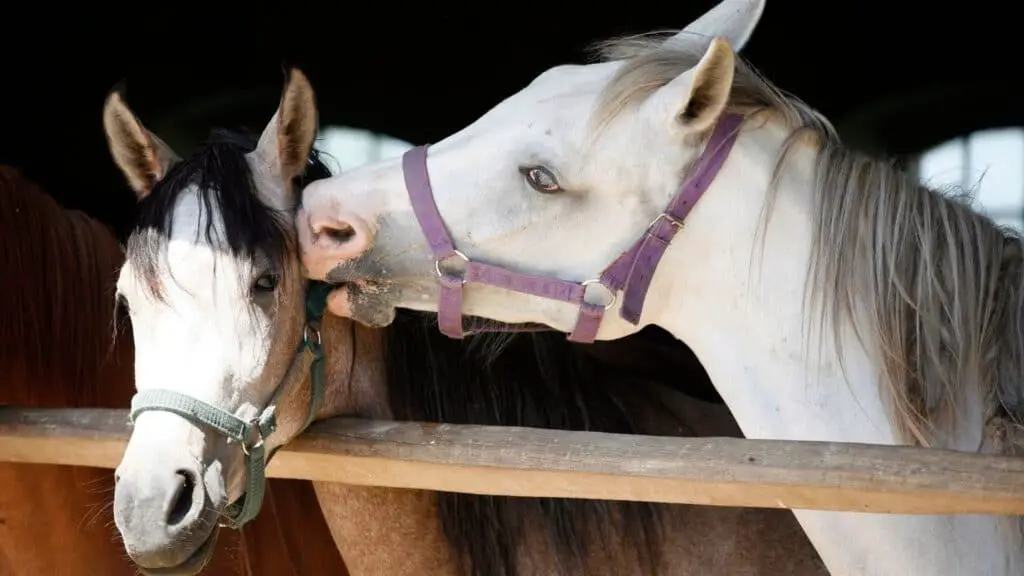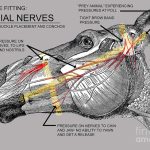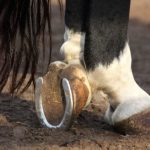Do Horses Go into Heat? Yes, horses do go into heat. Horses are considered to be polyestrous animals which means they will cycle through periods of estrus or “heat” multiple times throughout the year. During this time, a mare’s behavior and physiology change in preparation for possible mating with a stallion.
The length of the cycle can vary but is typically around 21 days starting with proestrus where hormones increase and physical changes occur like swollen vulva, increased urination, and aggression toward other mares. This is followed by estrus where the mare signals receptivity to the stallion before entering diestrus when she becomes unreceptive again if not bred. After that, she enters anestrus until her next cycle begins again several weeks later.
Horses experience a reproductive cycle known as “going into heat” which usually occurs every 21 days. During this time, the mare’s body releases hormones that make her more attractive to stallions and ready for breeding. Signs of a horse going into heat may include increased aggression, restlessness, and frequent urination.
It is important for owners to monitor their horses closely during these times in order to prevent any unwanted mating or injury from overly aggressive males.
Mare in Heat Behavior
Mares in heat typically exhibit a range of behaviors that are quite different from their normal behavior. These behaviors can include increased vocalization, excessive grooming and rolling, restlessness, decreased appetite, and frequent urination. Additionally, the mare may demonstrate an increase in sexual activity such as mounting other horses or displaying her hindquarters to potential mates.
It is important for horse owners to keep an eye out for these signs so they can properly manage their mare’s reproductive cycle.

How Do You Know When a Horse is in Heat?
It can be difficult to tell when a horse is in heat, but there are some signs that may indicate it. One of the most obvious signs is an increase in activity levels—horses may become more energetic and playful, showing signs of wanting to run around or bucking. They may also display changes in behavior, such as becoming more agitated or aggressive with other horses.
In addition, female horses will show physical changes when they come into heat, including increased genital swelling and vaginal discharge. Finally, you might notice a change in appetite; mares tend to eat less while they’re in heat as their hormones shift toward sexual maturity. While these behaviors often indicate that a horse is coming into season (or “in heat”), it’s important for owners to consult with their veterinarian if any of these symptoms persist for longer than normal—it could be indicative of another underlying health issue.
How Many Times a Year Does a Horse Go into Heat?
Horses typically go into heat twice a year, though the exact timing varies widely depending on the breed, age and health of the horse. Generally speaking, horses will enter their first estrus cycle in late winter or early spring and then again in late summer or early autumn. During this time they are “in heat”, meaning they become sexually receptive to stallions and may display behavior that makes them seem restless or agitated.
Signs of estrus can include increased activity levels, frequent urination, tail swishing and general excitement around other horses. Mares also tend to exhibit signs of aggression towards both males and females during this period as well as becoming more vocal than normal. It is important to recognize these behaviors because it helps owners anticipate when their mare might be ready for breeding or need extra attention due to hormonal changes.
Do Horses Have Pain When in Heat?
Yes, horses do experience pain when in heat. During the heat cycle, mares tend to be more sensitive and edgy due to hormones released from their ovaries. This can cause discomfort that is similar to menstrual cramps in humans.
While some mares show very little outward signs of discomfort during estrus, others may exhibit behaviors such as tail swishing, kicking at the belly or flank area, pinning ears back against the head and rolling. Increased sweating may also occur during a mare’s heat cycle which could indicate pain or discomfort due to hormone changes they are experiencing. Additionally, if a horse experiences any kind of injury while in heat it’s likely that they will feel even more pain than usual due to increased sensitivity caused by hormonal fluctuations.
Does a Horse in Heat Bleed?
Horses in heat do not typically bleed as part of their reproductive cycle. However, some mares may experience a bloody discharge during estrus, which is the time when they are most receptive to mating and when ovulation occurs. The blood often appears after the mare has been bred or teased with a stallion and can range from light spotting to more significant bleeding.
This phenomenon is known as “seasonal uterine hemorrhage” and it usually subsides within 24-48 hours without any medical intervention. In rare cases, however, excessive bleeding can be indicative of an underlying health issue such as endometritis or pyometra so if your mare experiences heavy bleeding at any point during her cycle you should consult your vet immediately.
Ask the Vet – When do mares first go into heat?
Conclusion
In conclusion, horses do indeed go through a period referred to as “going into heat.” Heat periods can last for about three weeks and occur every 21 days. During this time, the mare may display signs of aggression or be more receptive to males in their environment.
It is important for horse owners to understand how hormone cycles can affect the behavior of their animals so they are better able to recognize when they are going into heat and respond accordingly.
Janet G Kulick is an experienced horse rider, trainer, and owner of the informative horse blog, Horseray.com. Her engaging writing style and wealth of knowledge on horse care, riding, and training make her a trusted source for horse enthusiasts worldwide.






